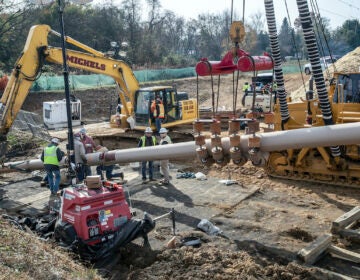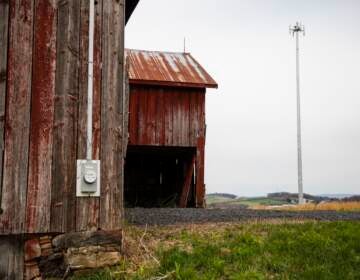New maps will help decide where up to $1 billion in federal money goes for Pa. broadband expansion
Pa. must first resolve a basic and yet surprisingly thorny challenge: pinpointing where high-speed internet is still unavailable.

According to the most recent data from the Federal Communications Commission, 4% of Pennsylvanians can’t get internet access at broadband speeds. That number rises to 13% in rural areas. (Amanda Berg for Spotlight PA)
This story originally appeared on Spotlight PA.
As Pennsylvania prepares for an anticipated flood of federal funding to improve broadband access, the state must first resolve a basic and yet surprisingly thorny challenge: pinpointing where high-speed internet is still unavailable.
Almost everyone agrees that the federal government’s current broadband maps are deeply inaccurate — a longstanding source of frustration for advocates, government officials, and internet users.
According to the most recent data from the Federal Communications Commission, 4% of Pennsylvanians can’t get internet access at broadband speeds — currently defined by the federal government as download speeds of at least 25 megabits per second and upload speeds of at least 3 megabits per second. That number rises to 13% in rural areas. But those figures, released last year, almost certainly undercount the problem.
Another often-cited estimate from BroadbandNow, a website that lets users compare internet plans, puts the number of Pennsylvanians without broadband at more than twice the FCC’s number.
Now, after a series of delays, the FCC is slated to unveil new broadband maps in November.
It’s a huge and complex undertaking with high stakes: The updated maps will dictate how much money Pennsylvania will receive from the federal government through a major new grant program, as well as which areas within the state will get priority for the funding.
“It’s unfortunate that the new map is hitting at the same time as the grant process — that’s just very poor timing,” said Doug Dawson, president of CCG Consulting, a national telecommunications consulting firm.
The new maps will still be based on data reported to the FCC by internet service providers, but that information will be more granular, and, officials say, more accurate, than in previous versions. Another change: local governments will be able to challenge the new maps if a provider reports to the FCC that broadband speeds are available at a particular location but residents disagree.
If local governments don’t use this challenge process, some areas without broadband could lose their chance at a slice of the new funding, Dawson said.
In Pennsylvania, some counties are better prepared than others.
Beaver County has already developed detailed maps of the areas that can’t get broadband, an effort that began before the pandemic and has given county officials a “very clear picture” of where service is lacking, said Lance Grable, director of the county’s Office of Planning and Redevelopment.
The county relied on sophisticated computer analysis, door-to-door surveys, and hundreds of internet speed tests submitted by residents, Grable said. Officials also compared notes with internet service providers and dispatched contractors to document the infrastructure that already existed — like whether a house was relying on satellite internet, which is often less reliable than other technologies.
It’s now up to the state Broadband Development Authority to collect and synthesize the piecemeal data that already exist and fill any gaps.
“There’s a lot of data out there but we’re not looking at any one comprehensive picture,” said Lisa Schaefer, executive director of the County Commissioners Association of Pennsylvania and a member of the state Broadband Authority’s newly created subcommittee on data and mapping. “It’s time we get it all on the table and figure out what we’re working with.”
Brandon Carson, the authority’s executive director, said the agency is looking at “all the options” for compiling its own maps. “We’re still talking through exactly what that strategy will look like,” he said.
If Pennsylvania doesn’t collect its own data to push back on any inaccuracies in the new maps, the state could lose out on millions of dollars in federal funding, experts warned at a hearing in May organized by the Center for Rural Pennsylvania, a state agency that researches policy for the General Assembly.
The federal government’s own delays on the new maps have given Pennsylvania “a last-minute reprieve,” said Sascha Meinrath, a professor at Penn State and lead author of two major reports on the state’s broadband woes, during his testimony at the hearing. “We have one more opportunity to more accurately document the haves and have nots.”
WHYY is your source for fact-based, in-depth journalism and information. As a nonprofit organization, we rely on financial support from readers like you. Please give today.






